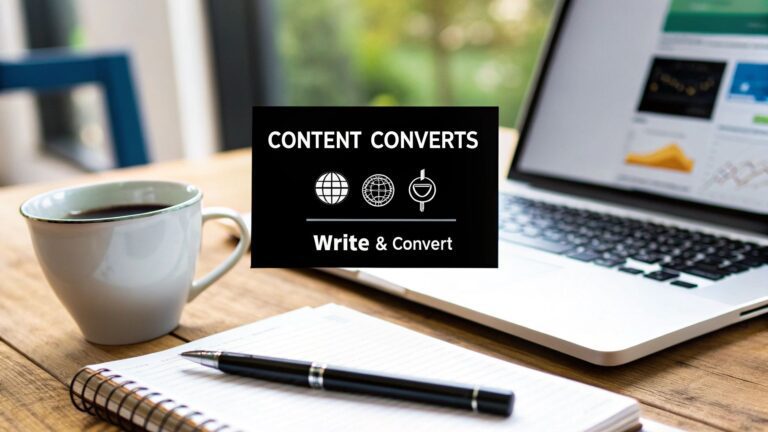Understanding What You Actually Need (Not What You Think You Need)
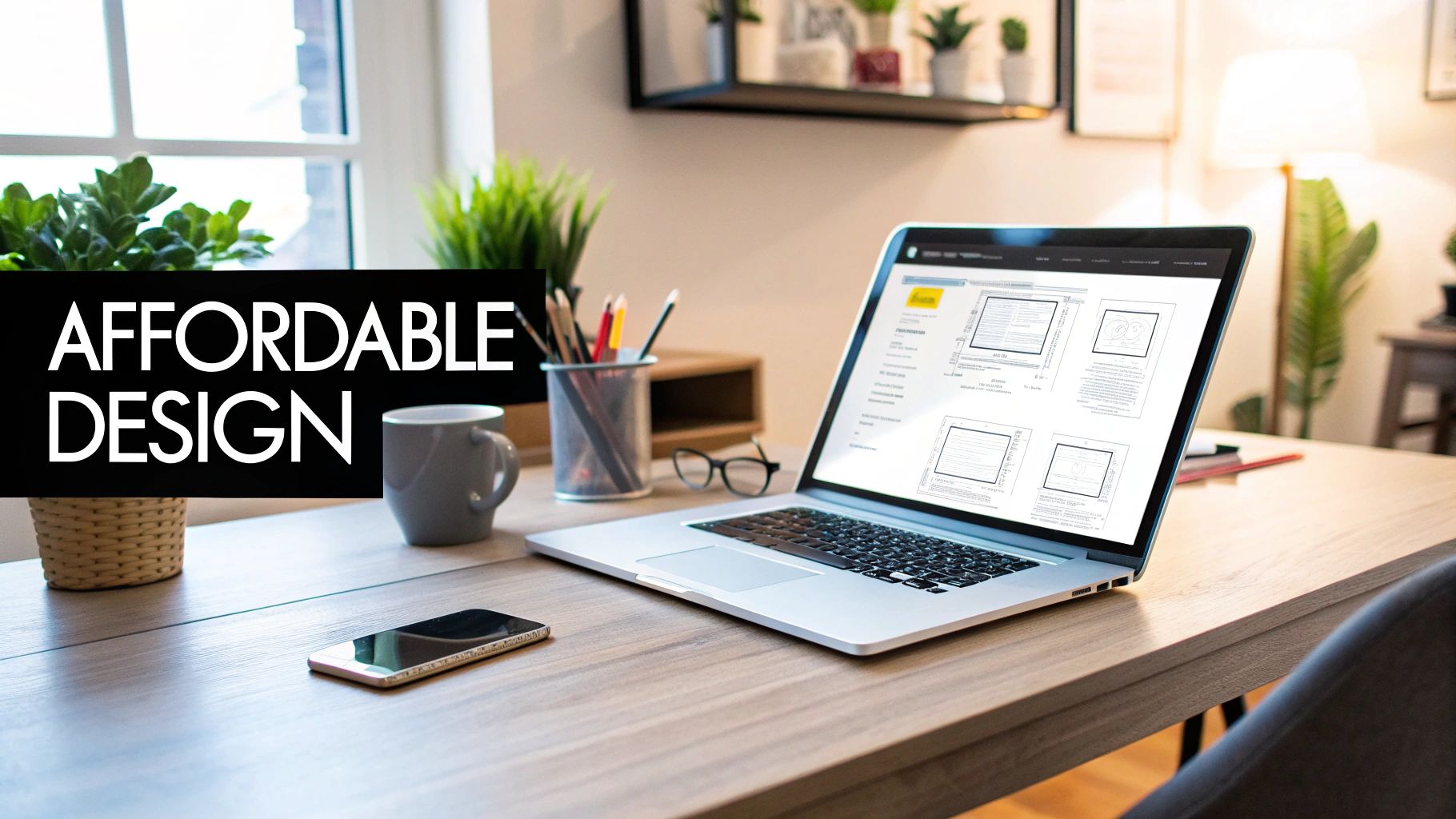
Let’s be frank: so many small business owners here in the UK either shoot for the moon or aim way too low when it comes to their websites. I’ve seen this firsthand working with businesses all over East Anglia. The ones who really make it online? They start by honestly assessing their needs, not their wants. It’s all about knowing the difference between the must-haves and the nice-to-haves, and truly understanding what each will cost you. Choosing the cheapest option upfront often leads to costly rebuilds later—a trap I’m here to help you avoid.
Defining Your Core Website Requirements
Think of it this way: a local bakery might think it needs a fancy e-commerce platform with online ordering, delivery integrations, and a customer loyalty program. But if most of their customers walk in the door, their core need is probably a visually appealing site showing off their delicious products, their location, and how to get in touch. Adding complex features later on is much easier than trying to strip them away from a website that’s over-engineered.
Also, think about your target audience. Do most of them browse on their phones? Then responsive design is an absolute must. Do you depend on local searches? Then SEO optimization becomes critical. Prioritizing these essential features within a sensible budget makes sure your investment is a smart one. Speaking of investments, the UK web design industry is booming, hitting £621.3 million in revenue. This tells you that UK small businesses are investing heavily in their online presence, even while looking for affordable solutions. Research shows a typical website can cost anywhere from £1,000 to £10,000+. Want a deeper dive into those costs? Check out this helpful resource: Find out more about UK small business website costs
To help visualize the costs associated with different approaches, let’s take a look at the following table:
UK Small Business Website Cost Breakdown
Comprehensive comparison of website costs across different approaches from DIY to professional agencies
| Approach | Initial Cost | Monthly Cost | Time Investment | Professional Quality | Long-term Value |
|---|---|---|---|---|---|
| DIY (using platforms like Wix or Squarespace) | £0 – £100 (template cost) | £10 – £30 (hosting & platform fees) | High (learning curve & design time) | Variable (dependent on skill) | Moderate (can be limiting for growth) |
| Freelancer | £500 – £2,000 | £10 – £50 (hosting & maintenance) | Moderate (communication & revisions) | Variable (portfolio dependent) | Good (flexible & scalable) |
| Small Web Design Agency | £2,000 – £5,000 | £20 – £100 (hosting, maintenance & potential extras) | Low (managed by professionals) | High (expertise & design quality) | Excellent (long-term support & growth potential) |
| Large Web Design Agency | £5,000+ | £100+ (hosting, maintenance & ongoing services) | Low (fully managed) | High (premium design & functionality) | Premium (best for established businesses with complex needs) |
As you can see, the cheapest option isn’t always the best value. While DIYing might seem appealing initially, the time investment and potential limitations can cost you more in the long run. A professional approach, whether through a freelancer or agency, offers better quality and scalability, though at a higher initial price.
Planning Your Budget Realistically
Building a realistic budget means thinking beyond the initial design fee. Ongoing costs like hosting, domain registration, security updates, and potential maintenance need to be factored in. And don’t forget about content! Will you create it yourself, or will you outsource it?
However, a tight budget shouldn’t mean sacrificing crucial features. A poorly designed website can drive customers away, costing you more than investing a little extra upfront for a quality build. It’s like baking a cake—skimping on key ingredients might save you a few pounds, but you’ll end up with a subpar cake (and maybe having to bake another one, costing you more in the long run). Finding the right balance between your budget and those must-have features is the key to long-term success.
Your Realistic Options (And What Nobody Tells You About Each)
So, you’re ready to get your small business a website. Excellent! But finding affordable web design can feel overwhelming. A lot of the advice out there is either outdated or just doesn’t grasp the budget realities of small businesses in the UK. Based on my experience working with businesses across East Anglia, I can tell you there are four solid paths to professional results without breaking the bank: DIY website builders, customizable templates, freelance designers, and value-focused boutique agencies.
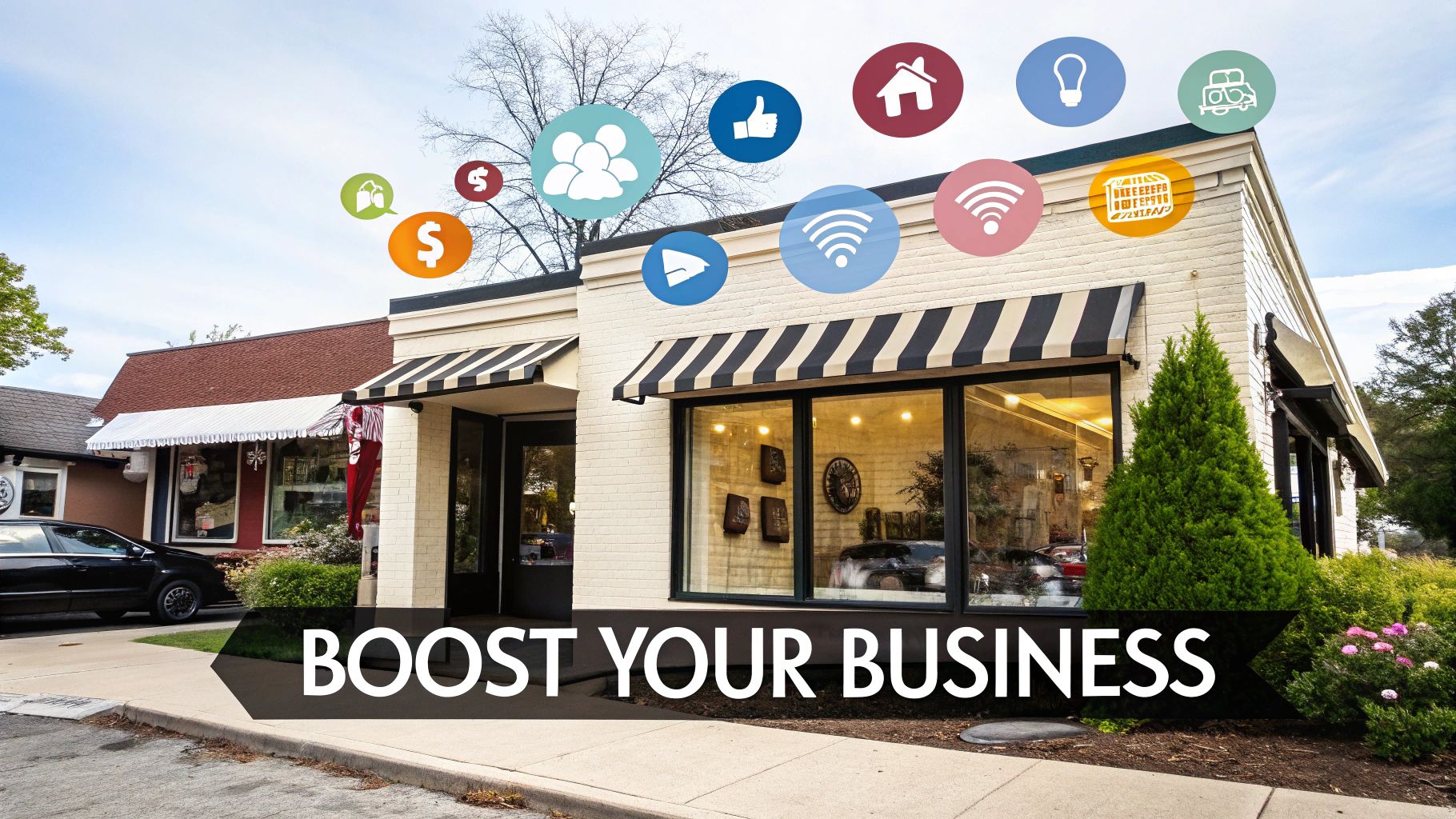
This screenshot shows the Wix homepage, a popular website builder. See how clean and user-friendly it is? That’s the main draw of DIY platforms. But picking the right platform is only the beginning.
Knowing what your website needs to contain is critical before you start building. For a good primer on planning your content, check out these tips on ecommerce content strategy. Website builders offer a tempting starting point. The website builder market is booming globally, and the UK is right there with it. Platforms like Wix, Squarespace, and WordPress are huge in the affordable web design space. Wix, for example, currently holds almost 45% of the global market share – a testament to its popularity with budget-conscious businesses. You can find more interesting stats here. But each platform has its own personality.
Wix is super easy to use, but can be limiting if you need complex features. Squarespace has gorgeous design-focused templates, but you’ll need a little more technical savvy. WordPress gives you ultimate flexibility, but the learning curve is steeper, and you’ll often need extra plugins and themes.
Then there’s the freelance route. This gives you a good balance between affordability and customization. Finding the right freelancer is a bit like finding a reliable tradesperson – you need someone skilled who gets what you’re trying to achieve.
Boutique agencies that focus on small business websites are another great option. They typically handle everything – design, development, SEO, even content creation – often at surprisingly reasonable prices. For a deeper dive into pricing, I recommend taking a look at this: Unlocking the Mystery of Website Building Costs.
Finally, don’t overlook smaller, local agencies. They can offer really personalized service and often have a strong understanding of the UK market.
Each option has pros and cons. The best choice for you depends on your business needs, technical skills, and long-term goals.
Making DIY Builders Work Like a Professional Built Them
If you’re thinking about building your own website, let’s make sure it doesn’t scream “DIY template.” Having helped loads of UK business owners on platforms like Wix, Squarespace, and WordPress, I’ve learned what separates the polished sites from the amateur ones. And honestly, it’s not about the platform itself, it’s about how you use it.
This infographic highlights some key design features that are important for small businesses:
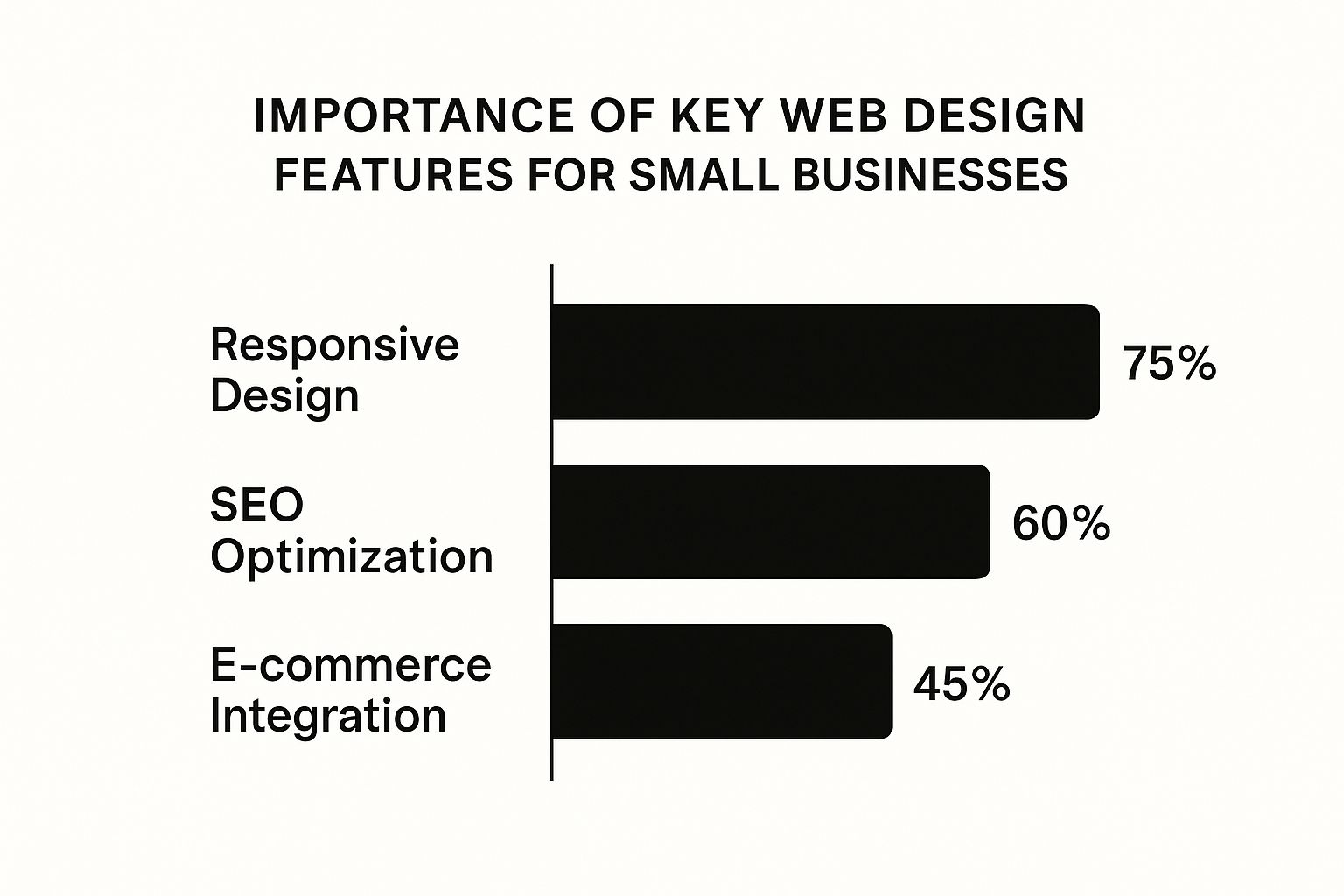
As you can see, responsive design is crucial, followed by SEO optimization. E-commerce integration, while important, might not be as critical for all businesses just starting out.
Choosing the Right Template (It’s More Than Just Looks)
First up, choosing your template. Don’t just go for the prettiest one. Think about what your business does. A photographer needs a visually impactful template, while a consultant might want something clean and informative. Also, don’t forget about the hidden costs when going DIY. For a complete overview, I recommend checking out this article on how much it costs to develop an ecommerce website.
Once you’ve picked your template, remember it’s just a starting point. The real magic happens in the customization process.
Customizing for Distinction (Where the Magic Happens)
This is where you inject your own personality and really make the site your own. Think about your brand colours, fonts, and imagery. Use high-quality images that capture the essence of your brand, and steer clear of those cheesy stock photos everyone uses. If you’re selling products online, high-quality product photography is absolutely essential. This article, 7 E-commerce Website Design Tips You Need to Know, offers some great advice on this topic.
Think about the user journey, too. Is the site easy to navigate? Can people find what they need quickly? User experience is a big deal, especially for visitors using their phones.
Content That Converts (More Than Just Words)
Your website content is your voice, your chance to connect with your audience. Keep it concise, engaging, and relevant. Include strong calls to action. Tell people what you want them to do, whether it’s booking a consultation, browsing products, or signing up for your newsletter.
Keeping your content fresh is important, too. Adding new blog posts, news, or promotions keeps your site dynamic and shows both visitors and search engines that you’re actively engaged. A stale website can make your business look dormant, even if it’s thriving. Think of your website like your shop window – you wouldn’t leave the same display up for months! Fresh content keeps people coming back and strengthens your brand presence.
To help you compare some of the leading UK website builders, I’ve put together this table:
Popular UK Website Builder Platform Comparison
Feature-by-feature comparison of the most popular DIY website builders for UK small businesses
| Platform | Monthly Cost | Templates | E-commerce | SEO Features | UK Support | Best For |
|---|---|---|---|---|---|---|
| Wix | £13-£36 | 900+ | Yes | Basic to Advanced | Yes | Beginners, creatives |
| Squarespace | £10-£30 | 110+ | Yes | Basic to Advanced | Yes | Design-focused businesses |
| WordPress.com | £0-£35 | 100+ | Yes | Basic to Advanced | Yes | Bloggers, businesses needing flexibility |
| GoDaddy Website Builder | £6.99-£24.99 | 1000+ | Yes | Basic | Yes | Very small businesses, quick setup |
| Shopify | £29-£299 | 70+ | Advanced | Basic to Advanced | Yes | E-commerce focused businesses |
This table gives you a quick overview of some popular options, highlighting their costs, template availability, e-commerce capabilities, SEO features, and support options. Each platform has its own strengths, so choosing the right one depends on your specific needs and priorities. Do some research to find the perfect fit for your business.
Finding Design Professionals Who Understand Value
Let’s be honest, saving money is usually top of mind when you’re running a small business. But sometimes, the smartest way to save is to invest wisely. This is especially true for web design. You don’t want to skimp on something so vital to your online presence, but you also need to be budget-conscious. My experience working with designers and developers here in the UK has taught me a lot about finding that sweet spot – getting great results without breaking the bank. The key is to find professionals who specialize in value-driven solutions from the start, not just premium providers offering a small discount.
Where to Find Reliable Professionals
So, how do you actually find these design wizards who get the small business budget struggle? Here are a few things I’ve found helpful:
- Networking: Seriously, talking to other small business owners can be a game-changer. Word-of-mouth recommendations are invaluable. Local business networking groups are fantastic for this.
- Online Directories: Sites like Clutch and Upwork are great resources. They can connect you with freelancers and smaller agencies that specialize in affordable web design. Be sure to use the filters to narrow your search by budget and location (UK if you’re here like me!). Finding local talent can make a big difference in communication and collaboration.
- Industry Events: Design conferences and workshops are another great way to meet designers face-to-face and see their work firsthand. Lots of UK events focus specifically on small business needs. Look for ones in your region – there are some excellent ones in East Anglia, for example!
Evaluating Portfolios: Look Beyond Pretty Pictures
Of course, a beautiful portfolio is important, but it shouldn’t be the only thing you consider. When you’re looking at a designer’s work, think about these things too:
- Relevance: Have they worked with businesses similar to yours? A portfolio full of flashy e-commerce sites isn’t much use if you need a simple brochure website for your plumbing business.
- User Experience (UX): Are their websites easy to navigate and user-friendly? And critically, do they look good and function well on mobile? Test their portfolio sites on your phone. A clunky mobile experience is a dealbreaker these days.
- Results: Don’t be afraid to ask about the impact of their designs. Did the website help increase leads or sales for their clients? A designer who focuses on results is much more likely to understand your business goals.
Asking the Right Questions: Uncovering True Value
When you’re interviewing potential designers, asking the right questions can really help you understand their approach to affordable web design for small businesses. Here are a few to consider:
- How do you approach budget constraints? Listen for answers that show creative problem-solving and strategic prioritization, not just cost-cutting.
- Can you share examples of successful projects within a similar budget? Seeing real-world examples within your budget range is really reassuring.
- How do you ensure the website meets my business goals? A good designer will be genuinely interested in your target audience, marketing strategies, and what you want to achieve with your website.
You might be interested in: our step-by-step guide on designing a website for a small business. It’s packed with more helpful tips.
Finding the right designer is a crucial investment in your business’s future. By following these tips, you can find a professional who gets it – someone who understands the value of delivering great results on a realistic budget. And once you’ve found that person, building a strong relationship with them is essential. Communication is key. Regular check-ins, clear feedback, and addressing any concerns quickly will keep your project on track and on budget. A good working relationship can mean ongoing value and support as your business grows.
Avoiding Expensive Mistakes That Kill Small Business Websites
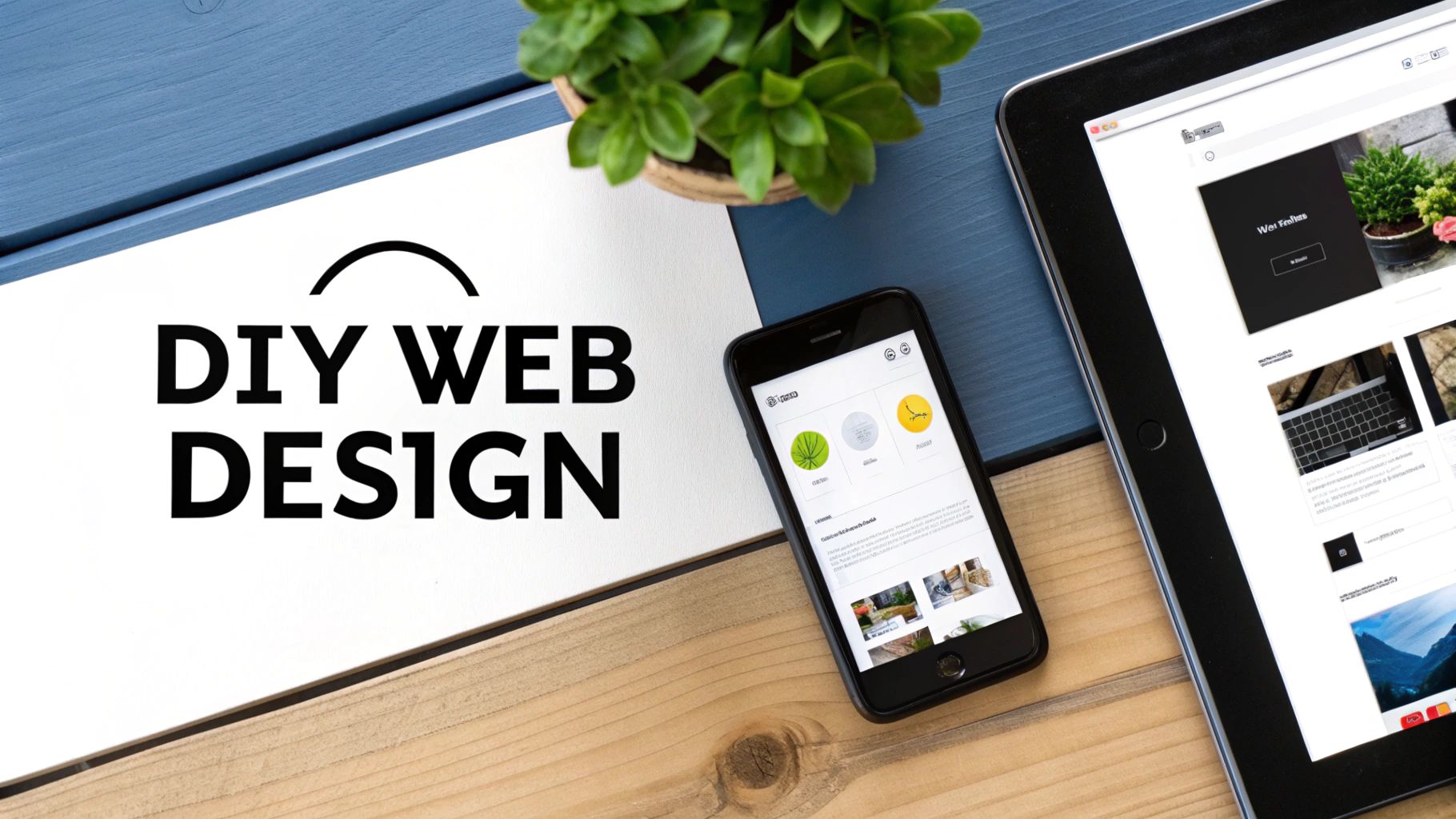
The most expensive website isn’t always the one with the biggest price tag upfront. Ironically, it’s often the “cheap” website that ends up costing a small fortune – lost opportunities, frustrated customers, and the inevitable rebuild down the line. I’ve seen this firsthand, helping businesses in East Anglia recover from web design disasters. And trust me, these aren’t complex technical meltdowns, but simple strategic oversights that snowball into major headaches.
The Hidden Costs of Cutting Corners
Think of your website as the foundation of your online presence. A shaky foundation might seem okay initially, but it can lead to some serious structural problems later. Imagine opting for the cheapest hosting plan. Sure, you save a few pounds each month. But what happens when your site crashes during a crucial sales period? The lost revenue can quickly wipe out those initial savings.
Similarly, overlooking mobile optimization is a cardinal sin. With most people browsing on their phones these days, a clunky mobile experience is like having a shop with a revolving door that’s jammed shut. People will just move on. And that leads us to another common mistake: neglecting basic SEO.
SEO Oversights: A Long-Term Headache
Affordable web design shouldn’t mean sacrificing SEO. Many business owners think SEO is an optional extra, something to worry about later. Wrong. Basic SEO should be baked into your website from the very beginning. It’s like planting a tree – the sooner you plant, the sooner it grows. Ignoring SEO early on means a lot of expensive catch-up later.
Speaking of affordable web design, it’s surprising how many UK small businesses still don’t have a professional online presence. Discover more insights on web design statistics. First impressions count, and 94% are influenced by a website’s design. A poor design or slow loading times can scare away almost 40% of potential customers.
Evaluating Your Options Before You Leap
Before you commit to any web design solution – DIY or professional – take a deep breath and ask yourself these crucial questions:
- Is it mobile-friendly? Test it on different phones, tablets, and browsers.
- Is it easy to navigate? Can visitors find what they need without a treasure map?
- Does it reflect my brand? Does it look and feel professional, capturing the essence of your business?
- Is it built with SEO in mind? Are the basic SEO elements in place?
Investing a little more upfront in a well-built website can save you a mountain of time, money, and frustration in the long run. It’s like cooking – quality ingredients might cost a bit more, but the end result is infinitely better. A professional-looking, well-functioning website is an investment that pays dividends over time.
Launching Smart and Planning for Real Growth
Getting your website live is a huge milestone, but honestly, it’s just the starting line. The most successful businesses I’ve worked with, especially smaller companies here in the UK, have their eyes on growth from the very beginning. I’ve spent years working with businesses across East Anglia, and I’ve seen firsthand how sustainable online success comes down to launching with purpose and adapting as you learn. You don’t need to overthink things at first, but a solid plan is key.
Essential Pre-Launch Testing: Avoiding Embarrassing Errors
Before you show off your new website to the world, take it for a spin. This isn’t just about hunting down broken links (though that’s definitely important!). It’s about seeing the site through your customers’ eyes. Grab some friends, family, or even a few loyal customers and ask them to explore the site and give you their honest opinions. Are there any parts that are confusing? Can they find important information easily? Does the site load quickly on their phones, tablets, and laptops? Catching these little snags before launch saves you from embarrassing mistakes and gives your visitors a smooth, enjoyable experience.
Backup Strategies: Protecting Your Investment
Your website is a valuable business asset, just like your physical shop, equipment, or inventory. You insure those things, right? Your website deserves the same protection. Regular backups are your insurance policy against all sorts of disasters – data loss, hacking, even accidental deletions. Most hosting providers like Bluehost or HostGator have automatic backup options, but double-check how often these happen and how easily you can restore your site if something goes wrong. When designing a website, it’s wise to steer clear of common pitfalls like mistakes in SMS cart recovery, which can really impact your bottom line. A reliable backup strategy gives you peace of mind knowing your online presence is safe and sound.
Initial SEO Setup: Building Momentum From the Start
Search Engine Optimization (SEO) isn’t an afterthought; it’s fundamental to how people discover your site online. There’s plenty you can do even before launch. Make sure your website is registered with Google Search Console and Bing Webmaster Tools. These free tools offer valuable insights into how search engines view your site and flag any potential issues. Optimizing your site’s title tags, meta descriptions, and image alt text is like laying the groundwork for early visibility, ensuring potential customers can actually find you.
Planning for Future Expansion: Smart Growth, Not Over-Engineering
Planning for growth is smart, but that doesn’t mean cramming every possible feature into your website right away. Think of it like building with LEGOs – start with the core blocks and add more as you need them. Focus on the essential functions you need now, and design your site so it’s easy to expand later. This keeps initial costs down and allows you to add things like e-commerce functionality, customer portals, or booking systems as your business grows. Keep an eye on your website’s performance, gather user feedback, and analyze your data; this will tell you which features are truly valuable and when it’s the right time to invest in them. By making data-driven decisions, you can ensure your website grows alongside your business without unnecessary complexity or expense.
Your Clear Action Plan for Affordable Web Design Success
Alright, let’s get down to brass tacks. We’ve talked about a lot, so let’s turn it into a practical plan you can actually use, regardless of whether you’re going DIY, freelance, or agency. Think of this as your roadmap to a fantastic website that doesn’t cost a fortune.
Your Evaluation Checklist
Before we dive into the roadmap, let’s do a quick check-in. For each option – DIY, freelance, or agency – ask yourself these questions:
-
DIY: Are you comfortable learning new software like WordPress? Do you have the time to invest in design and maintenance? Will a template-based website truly meet your long-term needs? And are you prepared to handle updates and security yourself? I’ve seen people get overwhelmed by this, so be realistic.
-
Freelancer: Take a good look at their portfolio – does it showcase experience relevant to your needs? Are they responsive and easy to communicate with? A good freelancer feels like an extension of your team. Do they have a clear project management process? What are their payment terms? And critically, do they offer ongoing support? You don’t want to be left high and dry after launch.
-
Agency: Does their portfolio align with your vision and brand? It’s not just about pretty websites, it’s about finding a style that reflects your business. Do they truly understand your business goals? What’s their pricing structure – is it project-based or retainer? What’s included in their services? Do they offer support after launch? If you’re in a specific location, like East Anglia, does the agency have local UK experience? Sometimes that local knowledge can make a real difference.
Project Timeline and Budget Worksheet
Now, let’s talk timelines and budgets. These are always tricky, but here’s a rough guide to get you started:
| Approach | Timeline | Budget |
|---|---|---|
| DIY | 2 weeks – 2 months+ | £0 – £200+ (platform fees & extras) |
| Freelancer | 4 weeks – 3 months+ | £500 – £3,000+ |
| Agency | 6 weeks – 4 months+ | £1,500 – £6,000+ |
Remember, these are just estimates. A simple brochure site will obviously take less time and money than a complex e-commerce platform. Your project’s complexity will heavily influence both time and cost. And don’t forget ongoing costs like hosting and maintenance! Building your own site might seem like the budget-friendly option, but remember, over 60% of web design companies say features and functionality are the biggest cost drivers. Choosing the right solution from the get-go is key to managing your budget effectively.
Setting Your Success Metrics
Before you even start sketching out designs or writing content, define what success looks like for your website. Is it increased leads? Boosting online sales? Building stronger brand awareness? Having clear goals will help you measure the impact of your new website and make smart decisions about future updates. It’s like having a compass – it keeps you headed in the right direction. I can’t emphasize this enough – a beautiful website is useless if it doesn’t achieve your business objectives.
Ready to take your online presence to the next level? Ibertech Solutions Limited provides bespoke web design, e-commerce development, SEO, and digital marketing services tailored for small and medium-sized businesses in Norfolk and Suffolk. Contact us today for a free consultation.




